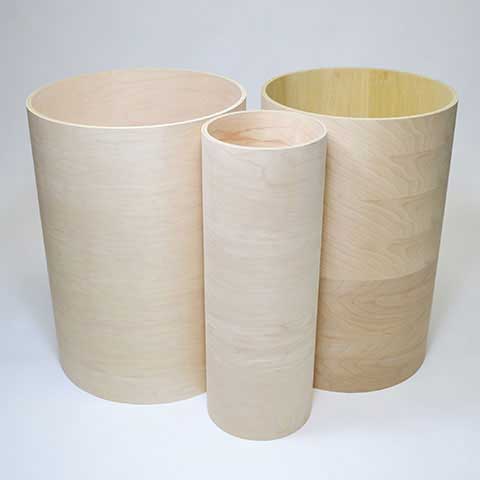Today’s topic, wood cylinders, may sound simple, but it unveils astonishing versatility across various fields. Wooden cylinders, manufactured from various tree species, possess distinct qualities lending suitability to various applications.
History Wood Cylinder Use
From the early days, when our ancestors made tools and buildings, the use of wood cylinders became a popular choice. Back then, without all our current tech, people moved giant logs to build everything from houses to monuments.
Now, fast forward a few hundred years. People became more skilled and found even more ways to use wood cylinders. They realized they could use them to create symmetrical and sturdy elements in furniture. Imagine tables, chairs, and sofas, all standing strong and elegant on cylindrical legs.
Have you ever noticed drums and many stringed instruments? They, too, rely on the cylindrical shape of wood to produce lovely tunes. Musicians understood that the shape and material played a vital role in the instruments’ sound.
Even explorers found a way to put wood cylinders to use. They would have them as log rolls for transporting goods! These heavy cylinders helped move larger items without the need for complicated machinery.
And, of course, how can we forget the playground? Many of those fun teeter-totters and jungle gyms rely on wood cylinders to give them structure and stability.
As our ancestors paved the way with wood cylinders in their hands, we followed and started using them in even more applications. The possibilities were endless, from DIY crafting and garden design to toys for our kids.
We have ingenuity and perseverance to thank for that. We took what we learned from the past, built on it, and found new ways to use these wood cylinders well.
So, the journey of wood cylinders goes from being a primal survival tool to becoming a valuable part of our day-to-day lives. They’ve come a long way, and who knows where we’ll see them next.
Wood Cylinder Applications
In Construction
Construction is a fundamental sector that heavily relies on wood cylinders. As formwork, scaffolding, and structural components, their resilience offers enhanced stability. Housing pillars and bridge support made from wooden cylinders exemplify their practical use in architecture.
In Furniture Design
The furniture industry utilizes wood cylinder’s aesthetic and functional qualities extensively. From table legs to bed frames, they add structural strength while enhancing the looks. The Scandinavian and mid-century modern are two design styles that often embrace this trend.
Musical Instruments
Ever thought about how that signature woody tone of your favorite guitar or the subtle resonance of a drum comes about? Yes, you guessed right: wood cylinders. They lend their charm to many musical instruments, imparting a touch of acoustical warmth.
Crafts and DIY Projects
For hobbyists and DIY enthusiasts, wood cylinders function as a versatile medium. They lead to beautiful crafts, ranging from candle holders to kids’ arts and crafts projects. The ease of workability that these cylinders offer accelerates the hand-crafting processes.
Landscaping and Garden Design
Landscaping affords an excellent opportunity to utilize wood cylinders. They help structure gardens, form edges, and fences, or even support climbing plants. It’s a natural material that is perfectly at home in green designs.
In Toys
On the lighter side, children’s playthings make substantial use of cylinders. Building blocks, car wheels, and pull toys all utilize wood cylinders, blending educational fun with safety, thanks to wood’s natural and non-toxic profile.
The Process of Wood Cylinder Manufacturing
Creating a wood cylinder is an art of precision and patience. Machines cut wood logs into the desired cylindrical shape. It’s crucial that we source the wood responsibly to ensure sustainability and minimal environmental impact.
And, yes, manufacturing wood cylinders involves precision and patience, and its impact, if not correctly managed, could be significant on our environment. Here’s a straightforward rundown of the manufacturing process:
- Log Selection: Among the first steps is selecting the proper logs. This depends on the needs of the end product – hardwoods for strength and softwoods for lighter objects. Environmentally responsible sourcing is always a priority.
- Seasoning: Once chosen, the logs undergo a seasoning process. This typically involves drying the logs to reduce moisture, which increases their durability and effectiveness.
- Cutting and Shaping: Machines cut the logs to the needed length following seasoning. These shorter lengths are then shaped into cylinders. Laser-guided cutting tools ensure the required precision.
- Sanding: The surface may be rough and uneven after the log is cut into a cylindrical shape. So, we use sanding processes to smooth and even out its surface.
- Finishing: Depending on the use, the cylinders may undergo finishing. This involves sealing the wood to help protect it from moisture and insect damage and can also include staining or painting for aesthetic appeal.
- Inspection: The last step in the process is quality inspection. This ensures the cylinder meets the quality standards and requirements set for the end product.
This manufacturing process is not just about shaping wood. It’s about preserving nature, adhering to sustainability standards, and delivering a versatile product ready to serve in countless manners.
Considerations When Choosing Wood Cylinders
With this in mind, we can see the importance of understanding one’s requirements in detail before choosing a wood cylinder. For instance, if you plan to build a piece of furniture, consider the aesthetic you aim to achieve. A birch cylinder with a smooth finish may cater to a minimalist, contemporary design.
In contrast, a roughened oak cylinder might align well with a rustic, vintage character. For projects exposed to outdoor conditions, choose wood species with high resistance to moisture and pest attacks.
Easy-to-carve wood like basswood can be your best bet if you’re intent on a crafting venture. Thus, aligning the choice of the wood cylinder with your project’s need can make all the difference between satisfactory and stellar outcomes.
Hardwoods or softwoods, polished or rustic – different needs call for different types of cylinders.
But let’s go a bit deeper into these critical considerations:
Quality
The quality of the wood goes a long way in determining its durability. Look for cylinders with smooth, straight grains that are free from cracks or indentations. Also, a solid piece without knots or pitch pockets usually indicates a high-quality wood cylinder.
Wood Type
The type of wood plays an important role, too. Each species brings a unique color, grain pattern, and hardness level. For instance, walnut and oak offer exceptional durability and a rich color palette, making them excellent for furniture. However, softer woods like pine or cedar can be easier to work with for craft projects.
Finish
Another important aspect is the wood’s finish. Are you going for a natural, rustic look? Choose an unpolished, rough-hewn cylinder. For a sleek, modern aesthetic, look for cylinders with a smooth, polished finish. Remember, finishes also influence the wood’s longevity and maintenance needs.
Size
When it comes to choosing the perfect wood cylinders, size matters. Not all projects require an identical diameter or length. And that’s the beauty of these versatile structures: they can be as thick as a tree trunk, as slim as a pencil, as long as a pole, or as short as a dice.
Your project dictates the desired size of your wood cylinder. Are you building a rotational toy that needs small-sized cylinders? Or are you working on a table leg that requires medium to large cylinders? Alternatively, you might sketch blueprints for a building that requires substantial, load-bearing ones.
Sustainability
Finally, let’s talk about the environmental impact. The wood should be responsibly sourced, preferably certified by a credible environmental body like the Forest Stewardship Council (FSC). Sustainability is not just an afterthought; it’s crucial for the health of our planet.
Combine these factors, and you’ll find a wood cylinder ideally suited for your project. Remember, each decision can influence the project outcome, so take your time and choose wisely.
Crafting Excellence
From supporting giant structures to influencing delicate craft projects, wood cylinders serve a myriad of applications. Their presence is ubiquitous in our houses, music, and gardens. They shape, construct, and contribute while maintaining an understated elegance.
It’s safe to state that wood cylinders, despite their simple appearance, have rich, wide-ranging applications. These silent contributors are truly unsung heroes, powering countless aspects of our daily lives.
Choosing the right wood cylinder can be transformational. It demands careful consideration of variables like the wood’s quality, species, and finish.
Whether it be hardwoods or softwoods, polished or rustic, different requirements call for diverse types of cylinders.
Keller Wood Products is a reputable company known as a plywood component manufacturer, primarily specializing in wood cylinders. Its assortment of wood cylinders stands out in its ability to add a nuanced character to any space or project.
Determining the right wood cylinder is not an uncomplicated task. It’s like picking a piece of art – meticulous attention must be paid to several factors, such as the wood’s species, quality, and finish.
Recognizing the diverse needs of woodcraft, Keller Products Inc. presents a wide choice of cylinders made from both hardwood and softwood. The collection is constructed to meet various project needs, from the demand for the solid, long-lasting quality of hardwood to the easy-to-work-with, adaptable nature of softwood.

